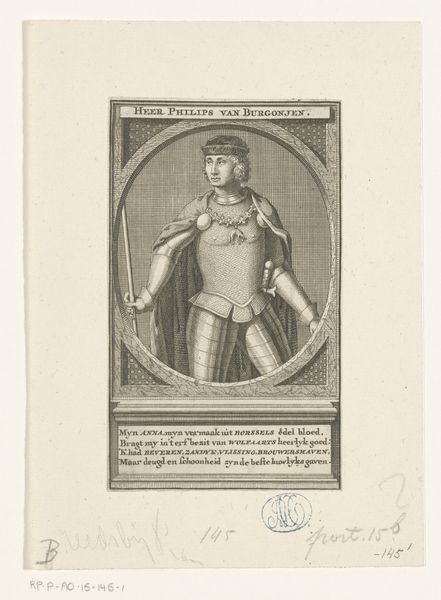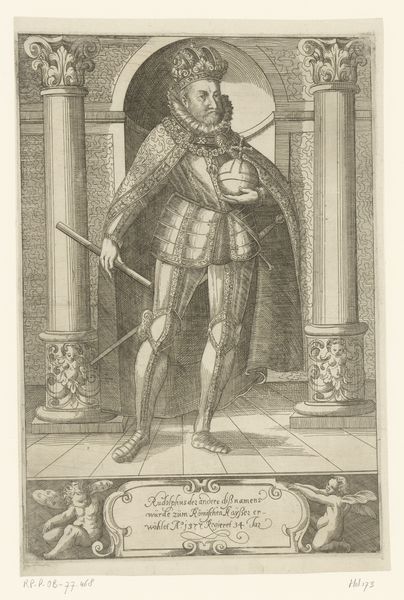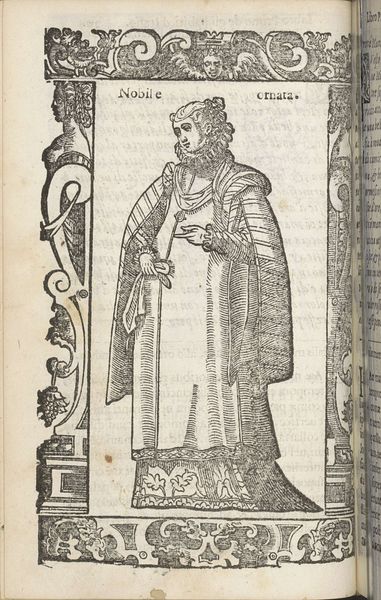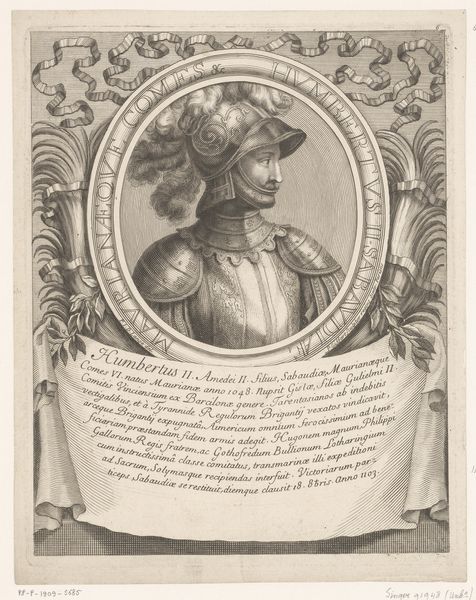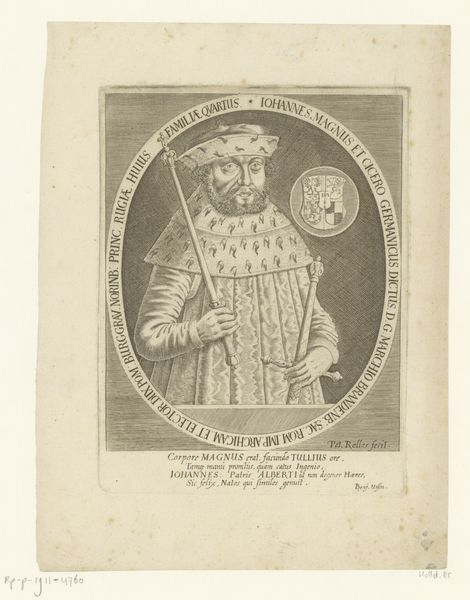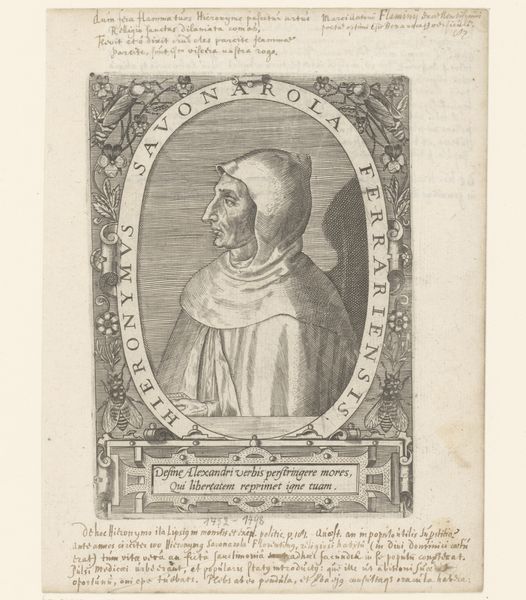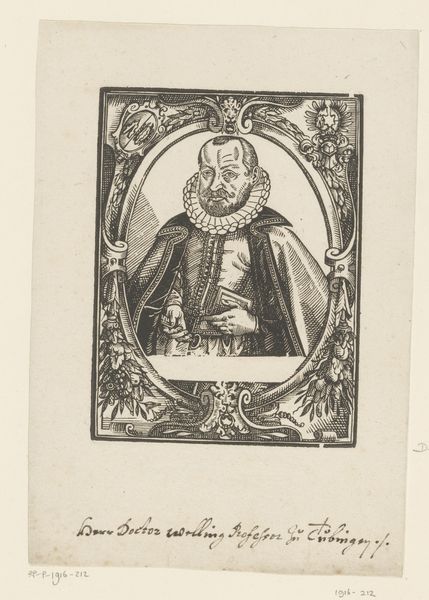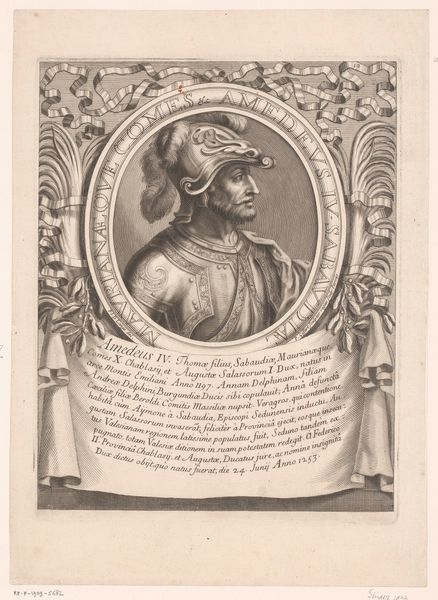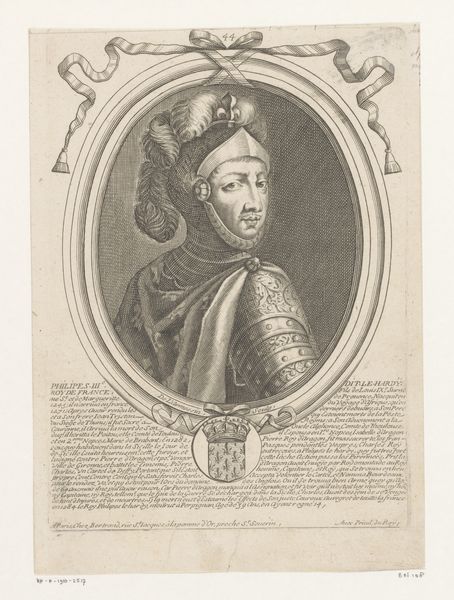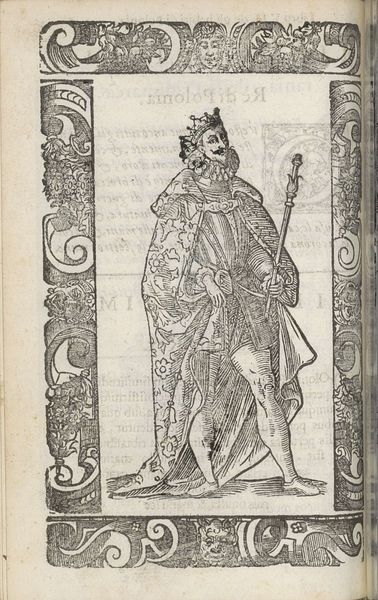
metal, paper, engraving
#
portrait
#
aged paper
#
baroque
#
metal
#
old engraving style
#
paper
#
engraving
Dimensions: height 130 mm, width 78 mm
Copyright: Rijks Museum: Open Domain
Curator: Here, we have an engraving from between 1715 and 1755, "Portret van Maximiliaan II van Bourgondië," which translates to Portrait of Maximillian II of Burgundy. It's presented on paper, created by an anonymous artist. What do you think? Editor: Well, it’s strikingly rigid, isn't it? Everything feels so contained, like it's trying to hold onto something, maybe power, maybe decorum. The limited tonal range of the engraving really enhances that feeling. Curator: Exactly. The composition is very typical of Baroque portraiture. Look at how Maximillian is framed within an oval, almost like he’s in a window or a mirror reflecting nobility and authority. He’s encased! Even the armour reinforces the idea of being protected, untouchable, which is fascinating. The details in the armour are just amazing, when you think about the tools they must have used to engrave the metal. Editor: It does create this strange distancing effect. The very controlled hatching suggests light, form, and texture—the armour gleams and casts shadow with these subtle gradients. It presents him almost as an icon more than a person. He almost fades away. I am finding this whole aesthetic to be rather curious though, maybe it is something about that era that I don't appreciate in general. Curator: It is curious, and yes, I see your point about fading away, though that would not have been the intention when the artwork was created! Given he holds a rod in his left hand and what looks like a sword hilt in the other hand, do you read any meaning in that pose or is it just decoration? Editor: The sword’s mostly obscured, lending ambiguity, whereas the rod, is stark and straight! If that isn't trying to point something out, I don't know what would be. Also, this reminds me very much of heraldry. You can imagine how such portraits served to codify power and legacy across generations... Curator: So, even with this "Portrait of Maximillian II", even by staying within its aesthetic, it is really pointing to the fact it is the portrait of an era itself... What can we actually know about the person behind this careful image? Editor: Precisely! We can learn to decode what the person wanted us to believe of themselves.
Comments
No comments
Be the first to comment and join the conversation on the ultimate creative platform.
